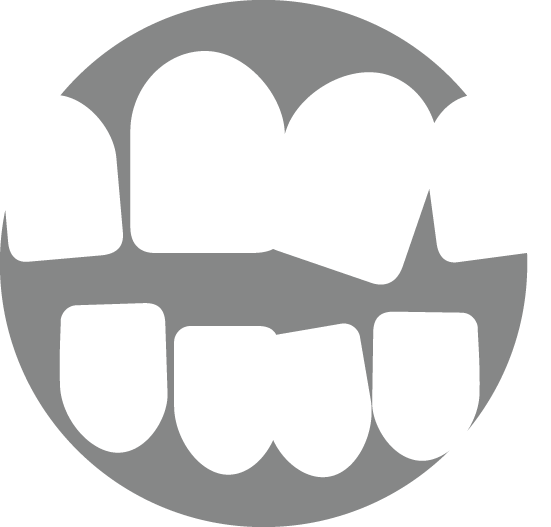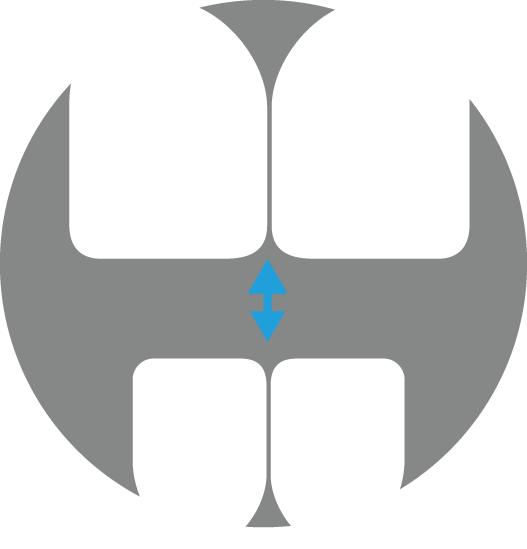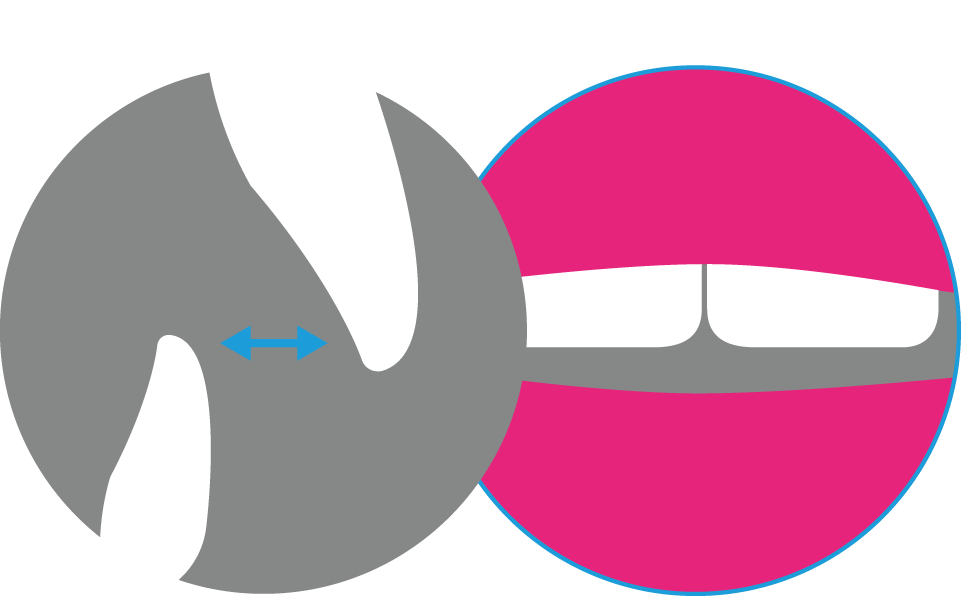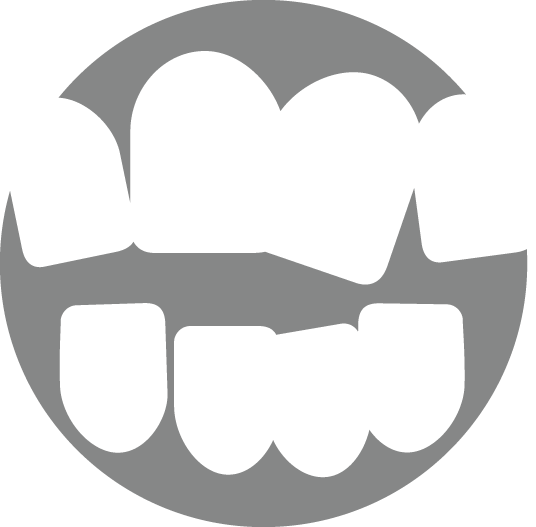Navigation
NHS Orthodontic Care
NHS orthodontic care is available to under 18s who require orthodontic treatment for dental health reasons, such as severe crowding of the teeth. Treatment for purely cosmetic problems is not usually available on the NHS.
We offer NHS braces at several of our practices, for under 18s who are referred by their general dentist.
What is the criteria for NHS orthodontic care?
If you’re under the age of 18, you may be eligible for NHS orthodontic treatment if your health may be impacted without it.
The first step is to visit your dentist. If they believe you might qualify, you’ll be referred to an orthodontist for a free consultation to determine if you meet the NHS orthodontic treatment criteria.
During your consultation, your orthodontist will assess your teeth, using a rating system called the Index of Orthodontic Treatment Need (IOTN).
What is the IOTN?
The IOTN looks at two aspects: your dental health and the appearance of your smile.
The Index of Orthodontic Treatment Need (IOTN) is a rating system that’s used to determine whether individuals across the UK qualify for NHS orthodontic treatment.
This is done using a set of IOTN measurements. The same measurements are used by orthodontists throughout the country to ensure the process is as unbiased as possible. In order to carry out IOTN assessments fairly your orthodontist will have undergone specialist training to become IOTN certified.
IOTN – the dental health component
Your orthodontist will start by looking at the impact of your teeth on your dental health. This will involve taking some measurements of your teeth so we can give you a grade between one and five.
Grade one
If you are given a score of one, this means your teeth are practically perfect. As such, you won’t be eligible for NHS care.
Grade two
If you score two you have a minor irregularity, which doesn’t require NHS treatment for dental health reasons.

Mild to moderate prominence (overjet)

Mildly crooked or Mild open bite crowded teeth

Mild open bite
Grade three
Grade three means you have a moderate irregularity and you might be eligible for NHS care.
If you score a three then we’ll also look at the appearance of your teeth to determine whether you’re eligible for NHS treatment. See the aesthetic component section below.

Moderate prominence and lips that don’t rest together

Moderately crooked or crowded teeth

Mild open bite
Grade four
If your teeth are grade four then you have a more severe irregularity and will be eligible for NHS care.

Severe prominence of between 6 and 9mm

Moderately to severely crooked or crowded teeth

Missing teeth that require pre-restorative orthodontics or space closure
Grade five
If you score a five you have a serious irregularity, which requires NHS treatment for dental health reasons.

Teeth that don’t have space to erupt naturally due to crowding (not including wisdom teeth)

Extensive missing teeth, i.e. more than one tooth missing in any quadrant

Severe prominence of more than 9mm
IOTN – the aesthetic component
If you scored a three in the dental health component then your case is borderline, and your orthodontist will need to assess the appearance of your smile.
This is done by comparing your smile to a set of 10 images, which are used as a reference point for ‘attractiveness’. The photos were rated in order of attractiveness by non-dental professionals. One = most attractive and 10 = least attractive.
If you are given an aesthetic score of six or above, combined with a dental health score of three, you will be eligible for NHS treatment.
What happens next?
If you are eligible for NHS treatment, you might need to join a waiting list before you can start your treatment. This is because we are only given a limited amount of NHS funding each year.
If you don’t qualify for NHS treatment, your orthodontist will be able to discuss self-funded private options with you.
![]()
How NHS braces work
NHS orthodontic care generally includes using fixed metal braces. In some cases, a twin block brace may be recommended. If you’re interested in more discreet options, you’ll have to pay privately.
Once you’re ready to start treatment, your orthodontist will fit your braces and explain how long your treatment will take and how to look after your braces and oral health. You’ll have regular appointments to adjust your braces and to ensure your teeth are moving as planned.
At the end of your treatment, you’ll be provided with a retainer to keep your teeth in place following treatment. Once your braces are removed, your orthodontist will continue to care for you under the NHS for a year. You’ll also continue to see your general dentist for regular check-ups to make sure your oral health is in good condition.
![]()
Why is there a waiting list?
There’s a high demand for NHS orthodontics, meaning there can be a waiting list before beginning treatment. We receive a certain amount of funding for NHS care, meaning we can only treat a certain number of patients per year.
![]()
What are the alternatives?
If your child doesn’t qualify for NHS care, you might want to think about private treatment. You may consider private care because of the following benefits:
- More flexible appointment times
- A shorter waiting list, in most cases
- A choice of discreet and removable braces
Some of our practices also offer Orthodontic Essentials – a fixed private treatment option for under 18s for £2,500.**
What are the next steps?
For NHS care:
For private care:
Spread the cost of your treatment†
Get the straighter smile you’ve always wanted with finance options that suit you, including 0% APR up to 36 months or 7.9% APR over 48 or 60 months.
Ask us about hassle-free finance with Novuna Personal Finance today. T&Cs apply.
What to expect
At your consultation, we will chat through your options and suitability for different teeth straightening treatments.
*Terms and conditions:
1. Free consultations are to discuss options and suitability for treatment. You may require a more in-depth clinical examination or diagnostic tests before treatment options can be discussed. There may be a charge for such examination or test, payable by you. The clinician will discuss this with you before any such examination or test takes place, which may be done during the same appointment as your free consultation.
2. Consultations subject to availability.
3. Free consultations available at participating practices only.
We recognise that when you give us personal information (which includes health information) you’re trusting us to take good care of it. Please see www.bupa.co.uk/privacy for more information about how we collect, use and protect your data.
If you don’t want to receive marketing about Bupa products and services that we think are relevant to you, please contact us at [email protected].
Find out more
Find out everything you need to know about orthodontics for under 18s.
Braces for under 18s
Find out more about the different types of teeth straightening options available for children.
Fixed metal braces
Invisalign
teen
If you're interested in removable braces instead of fixed ones, you may consider Invisalign teen as an option.
Our orthodontists
†Finance terms and conditions:
Finance applicant must be aged 18 or over, a UK resident, have a UK bank account and be in permanent employment. All loans are subject to eligibility, status, affordability and a credit check. T&Cs apply. Finance is available on private dental treatments only.
The minimum spend for finance is £250 and the maximum is £50,000. 0% APR representative is available on repayment terms of up to 36 months subject to the amount of credit. Finance taken at repayment terms of 48 or 60 months is subject to 7.9% APR representative.
Total Orthodontics and Bupa Dental Care are trading names of Oasis Dental Care Limited, Vantage Office Park, Bristol, BS16 1GW, whose company registered number is 00478127. Oasis Dental Care Limited is authorised and regulated by the Financial Conduct Authority FCA registration no: 710559. Oasis Dental Care Limited is a credit broker and not a lender.
Finance is provided by Novuna Personal Finance, a trading style of Mitsubishi HC Capital UK PLC, authorised and regulated by the Financial Conduct Authority. Financial Services Register no. 704348. Registered Office: Novuna House, Thorpe Road, Staines-upon-Thames, Surrey, TW18 3HP. Registered in Cardiff under company no. 1630491. The register can be accessed through; http://www.fca.org.uk/.
**Terms and conditions:
- £2,500 price point applies to Orthodontic Essentials at participating practices to patients aged 18 years or under.
- The price point only covers the orthodontic treatment required, in the form of traditional fixed braces, to straighten your teeth
- The price point does not include any applicable COVID-19 safety tariffs, which will be charged in addition if they apply.
- Prices and options for further treatment may vary depending on location and suitability.
- A COVID-19 safety tariff will not apply to the free consultation but may apply to specific appointments in your treatment, which you will be notified of beforehand.
- Price is subject to review and may be amended at any time.